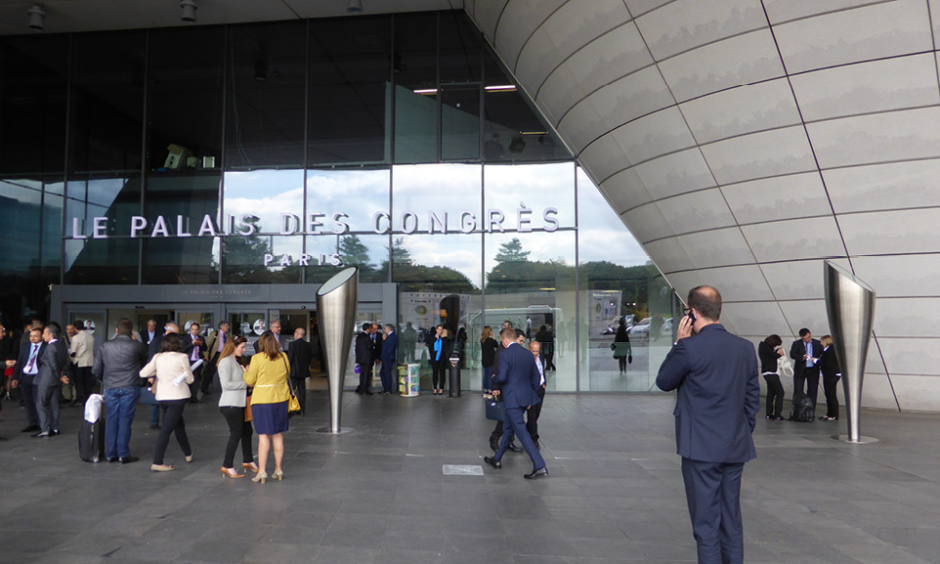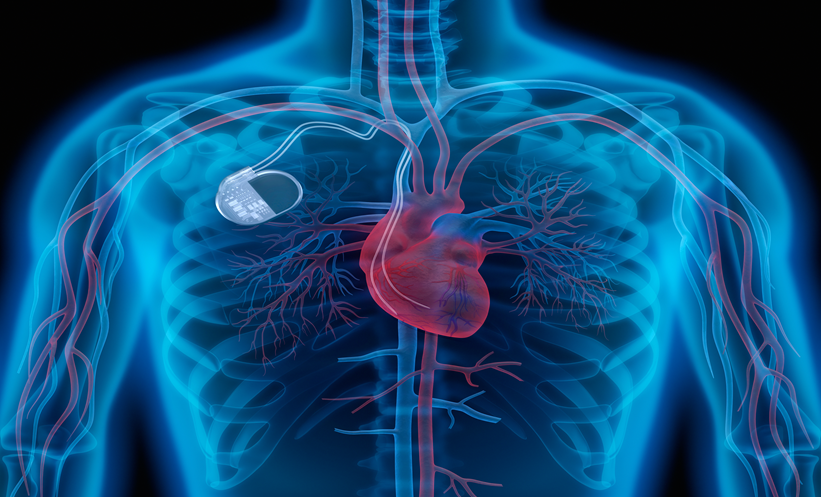Paris, France, played host to EuroPCR again this year; the city has a rich medical history from Paré to Pasteur and the innovations seen at this year’s congress are also likely to be talked about for years to come. It has been hailed as the year of interaction for EuroPCR with more engagement, sharing, and reaction than ever before.
The congress had 11,588 participants this year, with more than 510 abstracts integrated into the programme, more than 50 hours of live demonstrations, and 10 new sessions covering over 65 clinical trials. A brand new structure to the course this year saw the events categorised by theme, focus, and format. The themes covered the four main categories of interventional cardiology; the focusses split the categories into areas concentrating on research, daily practice, essentials for young practitioners and allied health professionals, and imaging. Finally, there was a diverse range of session formats this year from informal discussions to formal lectures. William Wijns, course director, commended these various sessions as “relevant for the entire community,” going on to say that they encompass “a self-directed, new learning experience.”
The Innovators Day brought together clinicians, researchers, industry innovators, and financiers to aid development in the current issues at the forefront of interventional cardiology. The day built upon three key areas: mitral and transcuspid valve interventions; heart failure interventions and technologies; and applications of e-health solutions in the cardiovascular space. Nicolo Piazza, Department of Interventional Cardiology, McGill University Health Centre, Montréal, Québec, Canada commented, “It was a truly fascinating day, full of new ideas and challenges, and I think it is the challenges that fuel innovation. As physicians and engineers, it is these challenges that gives us the opportunity to help our patients.”
The last day of EuroPCR saw the final of the abstract competition, the coveted Best Abstract Award, in which contestants had to present their abstract in 5 minutes followed by 3 minutes of questioning. The winners of this competition were Ziad Ali, whose abstract presented ‘Imaging and physiology-guided PCI without contrast administration in advanced renal failure: A feasibility, safety, and outcome study’, and Dejan Milasinovic, who presented the results from ‘Clinical outcomes after immediate vs. delayed invasive intervention in patients with NSTEMI: long-term follow-up of the randomized RIDDLE-NSTEMI study’.
Further to this, training and research awards were given by the European Association of Percutaneous Coronary Intervention (EAPCI). Alberto Polimeri received the first award for research into ‘Echocardiographic parameters for prediction of clinical responsiveness to MitraClip implantation’. Celestino Sardu was awarded the second for ‘In vivo and in vitro research protocol – Non-ST-Elevation Myocardial Infarction (NSTEMI) outcomes in Type 2 diabetic patients with non-obstructive coronary artery stenosis. DIAbetic Myocardial infarction Coronary Non-Obstructive Stenosis: DIA-MYCONOS STUDY’. The last award went to Nader Zaki-Nazmi, for work in ‘A head-to-head comparison: Aspirin plus clopidogrel versus rivaroxaban following transcatheter aortic valve implantation regarding post-procedural silent left main compromise and early hypoattenuated leaflet thickening’.
In this review, you will find a selection of articles summarising the most recent and impactful research from EuroPCR, with important topics such as transcatheter aortic valve implantation and percutaneous coronary intervention featuring heavily. We have also included work which comes directly from the daily sessions with a number of abstract reviews written by the presenters themselves. We hope this review will give you all the information you need to know to keep up-to-date within the interventional cardiology sphere. EuroPCR 2017 will return to Paris on the 16th–19th May, and we hope to see you there!
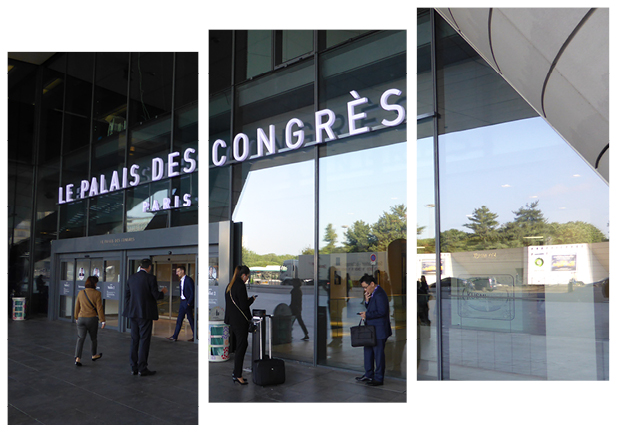
Optical Imaging Achieves Clinical Value in Guiding Percutaneous Coronary Intervention
PROMISING results from the OPINION Study regarding optical imaging for guiding percutaneous coronary intervention (PCI) were discussed in a EuroPCR press release dated 17th May 2016. The study results showed that optical frequency domain imaging (OFDI) with second-generation drug-eluting stents (DES) used to guide PCI matched the clinical and angiographic outcomes achieved by intravascular ultrasound (IVUS)-guided PCI at 12-month follow-up.
Eight hundred patients requiring PCI using DES (mean age 68 years) were selected for the non-inferiority study, randomised to either OFDI-guided PCI or IVUS-guided PCI at 42 centres in Japan. The procedure involved inserting resorbable polymer DES in de novo native coronary artery lesions, followed-up with angiography at eight months. The study’s primary endpoint was assessment of target-vessel failure at 12-month clinical follow-up. The results demonstrated low rates of target-vessel revascularisation (cardiac death, target-vessel related myocardial infarction, and clinically driven target-vessel revascularisation) in both imaging strategies at 12 months; OFDI-guided PCI amounted to only 5.2% while IVUS-guided PCI had a rate of 4.9%.
OFDI, the newest optical coherence tomography (OCT) technology, is a non-invasive imaging test that uses light instead of ultrasound. “OPINION is the first study to compare clinical outcomes with OFDI and IVUS to assess lesion morphology during PCI with second-generation DES,” said the author of the study Dr Takashi Kubo, Wakayama Medical University, Wakayama, Japan.
The results of the OPINION Study represent the first instance of comparative OFDI and IVUS-guided PCI. Dr Kubo was positive about the findings and their contribution to identifying OCT-guided PCI as a strategy of clinical value. “The clinical outcome in both OCT-guided PCI and IVUS-guided PCI was excellent. Our results might influence the next ESC guidelines, which currently give a Class IIb recommendation for OCT. OCT use during PCI should have a Class IIa recommendation.”
Leaders Free Trial Considers Acute Coronary Syndromes in Interventional Procedures
SIGNIFICANTLY lower rates of target-lesion revascularisation in patients with acute coronary syndromes (ACS) have been reported in those undergoing percutaneous coronary intervention (PCI) with a polymer-free biolimus-A (BA9) drug-coated stent (DCS) over those receiving a bare-metal stent (BMS).
According to a EuroPCR press release dated 17th May 2016, the results were attained in a sub-study of the LEADERS FREE trial. The trial investigated the use of polymer-free and carrier-free DCSs that transfer BA9 into the blood vessel wall over a 1-month period.
The sub-study assessed 659 patients with ACS: 554 diagnosed with a non-ST-segment elevation myocardial infarction and 105 with an ST-segment elevation myocardial infarction, who were randomised to receive either a polymer-free BA9-coated stent or a BMS, along with 1 month of dual antiplatelet therapy for all patients to minimise the risk of bleeding.
A 12-month follow-up concluded that patients with polymer-free stents had less than half the rate of clinically driven target-lesion revascularisation than those with BMSs (3.92% versus 8.96%, p=0.009). Risk of adverse events (cardiac death, myocardial infarction, and stent thrombosis) was also considerably lower in the group receiving DCSs (6.92% versus 9.32%, p=0.049), while BMSs increased the possibility of restenosis and thus, further intervention.
The results may have a substantial effect on future PCI procedures for patients with high-risk of bleeding. “Current guidelines may need to be revised and BMSs can no longer be recommended for these patients,” suggests study author Prof Christoph Naber, Contilia Heart and Vascular Center, Clinic for Cardiology and Angiology, Essen, Germany.
Prof Thomas Cuisset, from University Hospital, La Timone, Marseille, France, commented on the findings: “The information from this sub-study is key because this specific population has not been included in previous clinical studies and, until now, treating these patients was like working in a ‘data-free’ zone.” However, despite promising results, more research is required and the study’s specifications should not yet be extrapolated to other populations.

Developments in Less Evasive Surgery for Ischaemic Cardiomyopathy Treatment
VAST developments have been reported in two European studies that used the Revivent™ system to reduce the severity of heart failure in patients with ischaemic cardiomyopathy, and anteroapical left ventricular aneurysms.
Researchers investigated a total of 71 patients classified under New York Heart Association (NYHA) Functional Classification as having symptoms greater than Class II including anteroapical large post-myocardial infarction scarring, dilated left ventricle, and heart failure. Whilst 51 patients were treated using the surgical approach with the new system, the remaining 20 were treated with a hybrid transcatheter. The results demonstrated an overwhelming procedural success rate for implantation of the Revivent of 97.2%. Furthermore, the results indicated an operative and 30-day mortality of 5.6% as well as improvements in ejection fraction and NYHA Functional Class.
The new transcatheter procedure involves an anchoring system which excludes the need for more invasive surgery. Small titanium anchors are implanted on the left ventricular epicardium and the right ventricular septum, which are pulled toward one another, effectively reconfiguring abnormal cardiac geometry that causes dysfunction.
In a EuroPCR press release dated 19th May 2016, Marco Hernández Enríquez, Interventional Cardiology Fellow, Hospital Clínic de Barcelona, Barcelona, Spain, summarised, “This technique represents a less invasive intervention to exclude apical aneurysm instead of the usual surgical approach that requires cardiopulmonary bypass and ventriculotomy. This could open a new option to treat heart failure in a high-risk population.” He went on to say, “it may reduce left ventricle volumes with improvement in ejection fraction and quality of life for up to 1-year follow-up.”
Future deployment of the Revivent system for patients who are categorised as more high-risk would mean avoiding the use of more invasive surgeries. The findings are encouraging to both patients and healthcare professionals alike as they present a lower-risk alternative to the conventional surgical approach.
Research into Alternatives to Desolve® 150 for Treating Coronary Artery Lesions
RESEARCHERS at the University of Giessen, Giessen, Germany, have compiled findings regarding the differences between the novolimus-eluting, bioresorbable scaffold DESolve® 150 and a brand new DESolve 100 scaffold according to a EuroPCR press release dated 19th May 2016. Although DESolve 150 has been approved for use in treatment of coronary artery lesions, the new scaffold has a strut profile of just 100 m that scientists hope will reduce the incidence of scaffold thrombosis, which is associated with the shear stress caused by the struts following surgery.
The team compared the performance of the two scaffolds over a short-term period. This was measured using optical coherence tomography in a total of 57 patients who had undergone percutaneous coronary intervention, most of whom had stable angina as the indication for surgery. A total of 62 DESolve 150 scaffolds were implanted in 42 patients, whilst 17 DESolve 100 scaffolds were implanted in the remaining 15 patients.
In the results, the researchers noticed a trend toward a higher rate of residual stenosis with DESolve 100 compared with the 150 m strut profile (21.3% versus 15.3%, p=0.22), with a trend toward a smaller lumen and stent area.
The two devices had a very similar mean eccentricity index, however strut fractures were more common in the DESolve 100 group (30.8% versus 14.0%).
The team, led by Niklas Boeder, University Clinic of Giessen, Giessen, Germany, stated “We report the first real-world in vivo comparison of novolimus-eluting scaffolds with two different strut thicknesses. Although DESolve 150 and DESolve 100 showed similar mechanical characteristics there is a trend for less mechanical support with the DESolve 100. We need further outcome data to assess the relevance for daily clinical use,” although he counselled that “the attempt to reduce the strut thickness should not result in loss of radial strength of bioresorbable stents.”
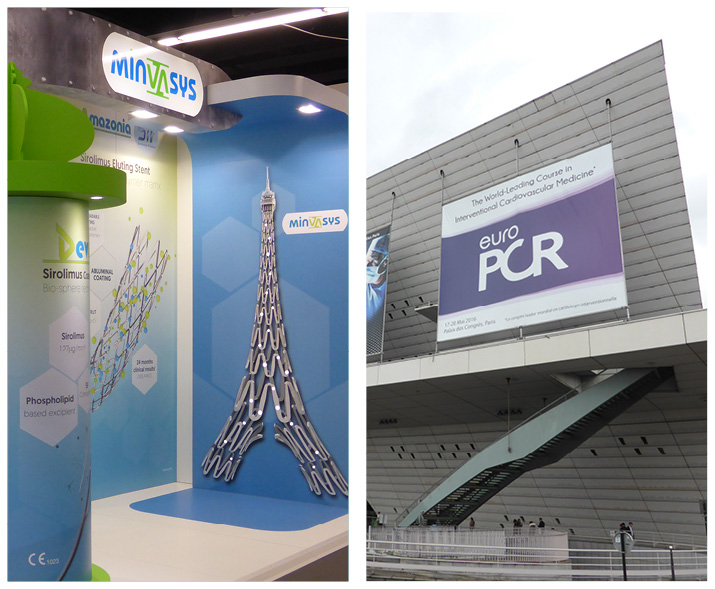
Study Suggests Alternatives Needed to Using Drug-Eluting Stents for Coronary Artery Lesions
RESULTS from a recent study which attempted to diffuse coronary artery lesions with newer-generation drug eluting stents have fallen short. From the results, researchers demonstrated that only a suboptimal fractional flow reserve (FFR) is achieved in patients who have undergone percutaneous coronary intervention (PCI) in comparison to blood flow of a healthy artery.
The study involved 74 patients who received second or newer-generation drug-eluting stents that were ≥30 mm in length and who had FFR rates ≤0.8. They underwent angiographic and FFR evaluation both before and after PCI, and at 9-month follow-up.
Following the study, the team found that an FFR of >0.95, the optimal post-PCI value, was only achieved in 12.2% of the patients (9 out of 74). None of the patients who received ultra-long stents (>50 mm) achieved the optimal FFR. Only 16.2% of the patients achieved FFR values of 0.91–0.95, and just 10.8% of the cohort achieved FFR <0.8, meaning that they were still considered ischaemic. Patients who received the ultra-long stent had a higher FFR gradient across the stent than those with long stents (0.07 versus 0.04, p=0.001). Angiographic restenosis rate at 9-month follow-up was 4.7%, with functional restenosis rate measured at 15.1%.
In a EuroPCR press release dated 18th May 2016, Dr Arvydas Baranauskas, Department of Cardiology, Center of Cardiology and Angiology, Vilnius University Hospital, Vilnius, Lithuania, commented, “the study shows that in the majority of cases diffuse coronary artery disease cannot be effectively treated using long drug-eluting stents because the FFR post-PCI is suboptimal.” He also added that “knowing that the optimal functional result is rarely achieved after stenting long coronary lesions in patients with diffuse coronary artery disease, particularly when the total stent length exceeds 5 mm, suggests other revascularisation options should be considered.”
Stem Cells Unable to Significantly Improve Ischaemia for Angina
DRUG-RESISTANT angina patients injected with stem cells demonstrated no significant improvement in inducible angina, reported an EuroPCR press release dated 17th May 2016.
Patients with inducible ischaemia or perfusion deficit experience a diminished blood flow, and thus oxygen supply, to the heart or a region of the heart, respectively. The recent REGENT-VSEL study explored the therapeutic effects of stem cells in 31 treatment-resistant patients presenting with stable angina and for whom vascularisation for myocardial ischaemia had been unsuccessful. The study randomised each of the patients to either autologous CD133+ cell or placebo treatment, which was injected into non-functioning regions of the left ventricle. A 4-month follow-up enabled comparison of the treatment outcomes in this group of patients.
Myocardial perfusion in each individual was evaluated at follow-up using single-photon emission computed tomography. The results suggested a lower level of inducible ischaemia activity and total perfusion deficit in those treated with CD133+ cells compared with the placebo group, with summed difference scores of 2.60 versus 3.63, and 3.60 versus 5.01, respectively. However, these differences could not be proven significant at the statistical level of analysis. On the other hand, patients that received CD133+ cell therapy did demonstrate a significant reduction in left ventricular volume when compared with those in the placebo group.
“The study suggests that we probably need standardised second-generation cell products, such as expanded, pre-differentiated, or allogeneic cells, in order to obtain clinical improvement,” elucidated Prof Wojciech Wojakowski, Department of Cardiology, Medical University of Silesia, Katowice, Poland. Nonetheless, no serious adverse events or deaths occurred during the length of the study, a positive finding for the research team. Additionally, the data has contributed new guidelines for three dimensional NOGA® mapping, furthering our understanding of myocardial function and setting the stage for further study.
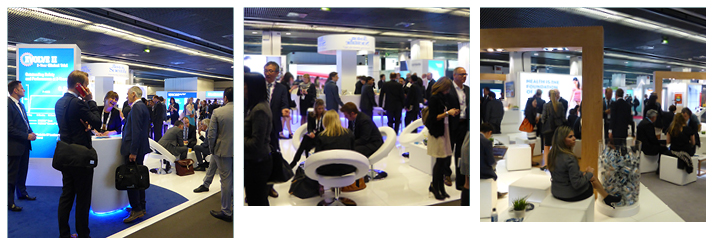
Advancements in the Treatment of Secondary Mitral Regurgitation
SIGNFICANT developments have been reported concerning mitral valve construction in patients with high-risk secondary mitral regurgitation (MR). The Cardioband® reduces MR and improves function and quality of life in high-risk patients. The reconstruction of the mitral valve by direct annuloplasty is delivered transfemorally, eradicating the need for open-heart surgery.
Researchers enrolled 49 high-risk patients with significant secondary MR, in which 82% fell into the New York Heart Association (NYHA) heart failure Class III–IV with a mean left ventricular ejection fraction of 33%.
The procedure, which involved implantation of the device, was successful in reducing MR to Grade 2 or lower in 41 out of 47 (87%) of patients. At the 12-month follow-up, 89% of patients (n=22) had an MR of Grade 2 or lower, with just over two-thirds (68%) having NYHA heart failure of Class I–II. At follow-up, a significant improvement in quality of life and tolerance to exercise was also demonstrated.
In a EuroPCR press release dated 17th May 2016, Dr Georg Nickenig, Department of Cardiology, University of Bonn, Bonn, Germany, summarised, “transseptal mitral repair with the Cardioband device resulted in reduction of MR by reconstruction of the mitral annulus.” He also reported that “the safety profile is comparable to other transcatheter mitral procedures and the reduction in severity of MR and clinical benefit are stable up to 12 months.”
The results of the study prove incredibly promising, with a high number benefitting from the procedure; giving improved function and quality of life. Experts believe that eventually, these technologies could be applied systematically around the world to patients who suffer from secondary MR as well as showcasing an evolution in technological advancement for heart surgery.
Long-Term Durability of Transcatheter Heart Valves Questioned
LONGER-LASTING transcatheter heart valves (THVs) will be required in the coming years as life expectancy of patients has been extended following surgery. A recent study investigating the long-term durability of transcatheter valves has found that half of them had undergone degeneration within 10 years following implantation.
The study evaluated 704 patients (mean age 82 years) from two centres in Canada and France, all of whom underwent a transcatheter aortic valve implantation (TAVI) >5 years earlier; of these patients 378 were followed-up with repeat echocardiograms for up to 10 years. Patients who died within 30 days had device failure immediately after the procedure, and those who had a valve-in-valve procedure were excluded from the analysis. The valves used in the study included the Edwards SAPIEN XT, the Edwards SAPIEN, and the Cribier-Edwards™ valves.
After 5 years, those who had survived (n=100) were assessed for valve degeneration, this was measured by intravalvular regurgitation and/or aortic stenosis (≥20 mmHg). Thirty-five patients were identified as having valve degeneration, mostly occurring between 5 years and 7 years; the majority (two-thirds) of the cases were intravalvular regurgitation and the remaining third were valvular stenosis; there was also a small number of mixed cases.
Dr Danny Dvir, Centre for Heart Valve Innovation, St Paul’s Hospital, Vancouver, Canada, spoke of the need for forethought when performing these procedures in a EuroPCR press release dated 17th May 2016. “Physicians performing TAVI in younger patients and in those expected to survive long after the procedure should be aware that the long-term rate of THV degeneration is not negligible, at least for first-generation THV devices. Physicians must be mindful of the limitations of the THV they implant and whether patients can be safely treated by another transcatheter approach, such as valve-in-valve, if a THV fails years later.” It is hoped that in the newer devices there will be less degeneration and thus reduced need for repeat procedures.
Surgery Versus Transcatheter Aortic Valve Implantation
HEAD-TO-HEAD debate at this year’s EuroPCR focussed on whether or not transcatheter aortic valve implantation (TAVI) is suitable for low-risk patients; currently a heart team decides if a patient receives the conventional surgery or TAVI. The great debate panel was comprised of three cardiac surgeons (Prof Jean Francois Obadia, Prof Gerhard Wimmer Greinecker, and Dr Thomas Walter) and three interventional cardiologists (Dr Darren Mylotte, Dr Lars Sondergaard, and Prof Stephan Windecker).
There was mutual agreement that the current practice of a case-by-case approach is the best one and that specific patient clinical data is required. They also all agreed that further data is required for a more evidence-based approach, specifically regarding the durability of bioprosthetic valves. Prof Obadia raised the concern that “we have absolutely no evidence that these valves will last for several years.”
Dr Walter raised the point that, at present, conventional surgery can achieve “perfect outcomes” yet there are several aspects in need of consideration, such as valve morphology, in low-risk patients. Prof Greinecker even suggested that “it is time to step a little bit on the brakes” with TAVI procedures. Despite this, Dr Myolette mentioned the evidence from echocardiographic data in randomised trials comparing the interventions which suggests the two are at least comparable and that TAVI may have superiority in terms of haemodynamic performance at 5 years.
Dr Sondergaard discussed the NOTION trials and how they have shown that in younger populations (60–65 years) TAVI is safe and efficient. This idea was supported by Prof Windecker who said: “We have witnessed that TAVI has matured in a very secure and reproducible technique and we have a sound body of evidence that truly justifies that this intervention can be extended to low-risk patients.”
Further discussion brought about the idea of how a younger patient may in fact be a ‘sicker’ patient with increased comorbidities. The take-home message from the debate was that whole decision-making should be used and that further data needs to be collected regarding TAVI in low-risk patients.

